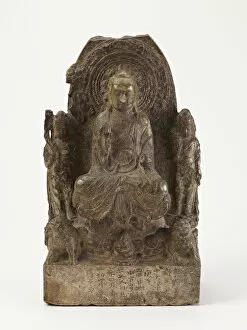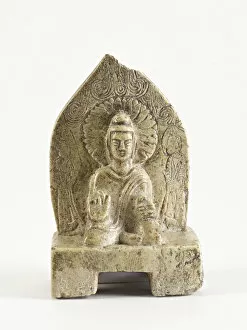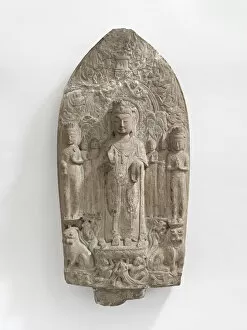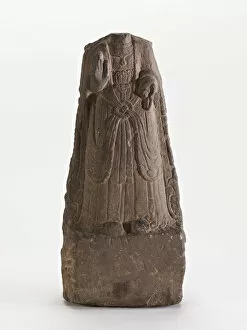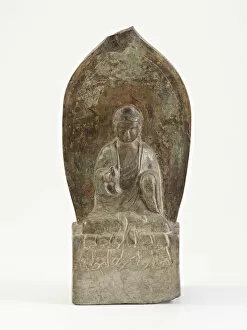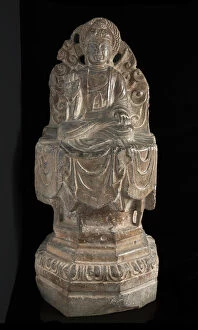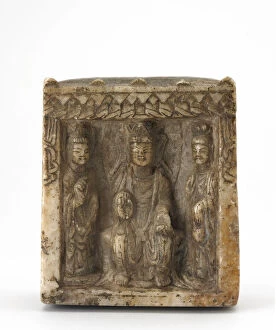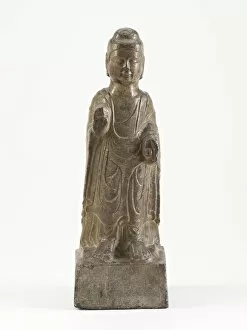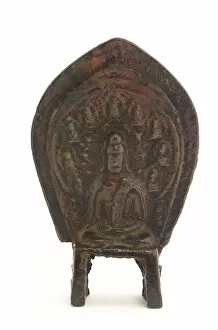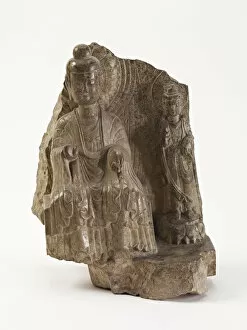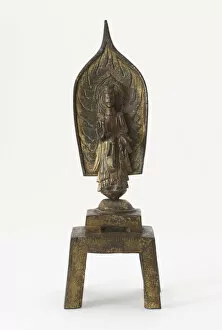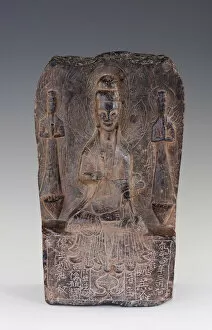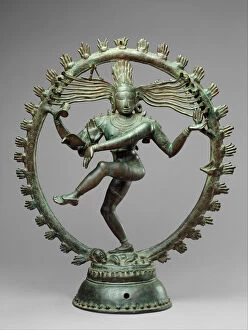Abhayamudra Collection
"Exploring the Abhayamudra: A Glimpse into Buddhist Art of the Period of Division" Step back in time to the fascinating era of the Period of Division, around 550 CE
For sale as Licensed Images
Choose your image, Select your licence and Download the media
"Exploring the Abhayamudra: A Glimpse into Buddhist Art of the Period of Division" Step back in time to the fascinating era of the Period of Division, around 550 CE, where an unknown creator crafted remarkable artworks that still captivate us today. Among these treasures is a collection showcasing various depictions of Buddhism's trinity. One such masterpiece is a seated Buddha surrounded by figures, possibly dating back to 386-535. The serene expression on Buddha's face emanates tranquility and wisdom, while the surrounding figures add depth and symbolism to this enigmatic artwork. Another intriguing piece from this period features standing bodhisattvas alongside Pratyekabuddhas and majestic lions. This composition reflects both spiritual enlightenment and earthly strength, capturing the essence of Buddhism during this tumultuous time. A fragmentary sculpture depicting Buddha further transports us into this ancient world. Although its creator remains unknown, their skillful craftsmanship shines through as we observe every delicate detail preserved over centuries. The Seated Shijia Buddha (Shakyamuni) offers another glimpse into either the Period of Division or modern times. Dated around 549 CE or possibly earlier, it showcases a moment frozen in eternity—a testament to devotion and reverence for one's faith. Delving deeper into Buddhist artistry during this era reveals a miniature shrine tablet intricately designed with meticulous care around 520 CE. Its exquisite form invites contemplation as we marvel at how something so small can hold such profound meaning. A seated Buddhist figure atop a high octagonal pedestal catches our attention next—an embodiment of grace and spirituality that transcends time itself. Perforations within enhance its ethereal quality, inviting light to dance through its sacred presence. Moving forward chronologically but remaining within similar artistic themes brings us to a four-sided miniature stele believed to be from Western Wei dynasty circa 550 CE. Though its origins remain shrouded in mystery, its intricate carvings tell stories of devotion and enlightenment.

